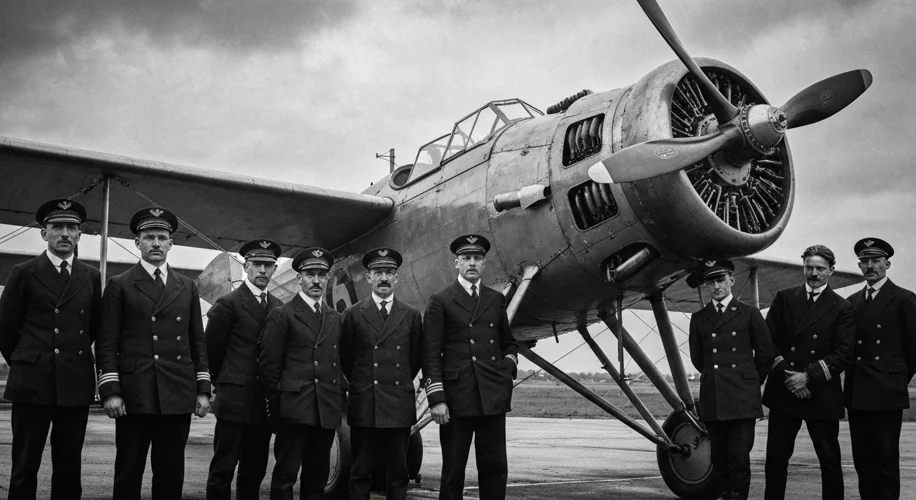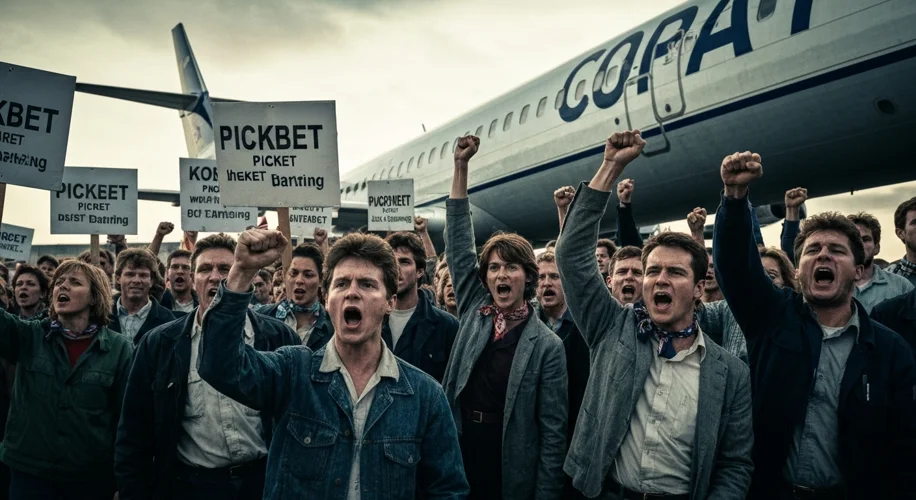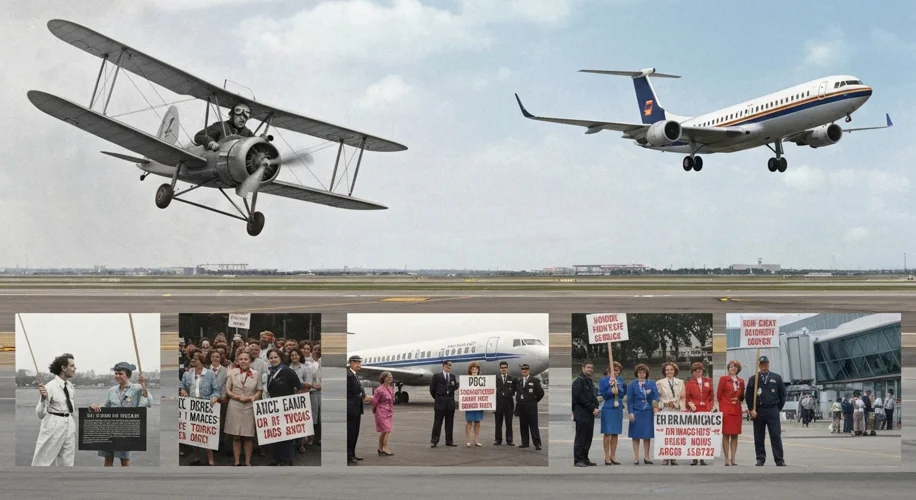The roar of jet engines, the thrill of takeoff, and the promise of distant lands – air travel has become an intrinsic part of modern life. Yet, beneath the sleek veneer of global connectivity lies a history often marked by tension, negotiation, and the dramatic spectacle of labor disputes.
The genesis of labor relations in aviation can be traced back to the nascent days of commercial flight in the early 20th century. As airlines began to emerge from the pioneering spirit of aviation, a new workforce was born: pilots, mechanics, baggage handlers, and eventually, flight attendants. These were often skilled individuals, passionate about the burgeoning industry, but as companies grew, so did the disparities in wealth and working conditions.
Early negotiations were often informal, a handshake between a pilot and a company owner. However, as the industry matured, so did the formalization of labor agreements. Unions began to form, providing a collective voice for workers who sought fair wages, reasonable hours, and safer working environments. The Air Line Pilots Association (ALPA), founded in 1931, stands as a testament to this movement, becoming one of the most influential pilot unions in the world.

The post-World War II era saw a significant expansion of air travel. With this growth came increased labor activity. The 1940s and 1950s were marked by a series of negotiations and, at times, strikes that tested the resilience of both airlines and the flying public. For instance, the 1948 airline strike, involving various unions across multiple carriers, significantly disrupted air traffic, highlighting the delicate balance of power.
One of the most defining periods for airline labor relations was the 1970s and 1980s. The Airline Deregulation Act of 1978, intended to foster competition and lower fares, inadvertently created a more volatile labor landscape. Airlines, facing increased competition, began to scrutinize costs, leading to aggressive negotiations with their unions. This era saw some of the most significant and impactful strikes in aviation history.
The PATCO (Professional Air Traffic Controllers Organization) strike in 1981, though involving air traffic controllers rather than airline employees directly, had a profound impact on the entire aviation system. President Reagan’s firm response, firing thousands of striking controllers, sent a clear message that reverberated through labor relations across the nation, including the airline industry. It signaled a tougher stance from management and government against union actions.

In the ensuing years, airlines like Eastern Air Lines, Pan American World Airways, and Trans World Airlines, once giants of the sky, faced severe financial difficulties, often exacerbated by labor disputes. The 1989 Eastern Air Lines strike, for example, crippled the airline and was a major factor in its eventual bankruptcy. This period underscored how crucial labor stability was for the survival of these complex and capital-intensive businesses.
The late 20th and early 21st centuries brought new challenges. Mergers and acquisitions reshaped the industry, often leading to uncertainty for employees. The rise of low-cost carriers introduced a different labor model, often with non-unionized workforces or different collective bargaining agreements, creating a bifurcated labor market within the industry.
Despite these shifts, the fundamental dynamics of labor relations in aviation remain. Pilots, mechanics, flight attendants, and ground staff continue to engage in negotiations over pay, benefits, safety protocols, and working conditions. Strikes, though perhaps less frequent than in some earlier periods, remain a powerful tool in their arsenal when negotiations break down.
For instance, the pilot shortages and increased travel demand in the post-pandemic era have seen a resurgence in labor activism. Airlines have faced demands for better pay and working conditions from various employee groups, including pilots at major carriers, leading to intense negotiations and the occasional threat or execution of work stoppages. The ability of airlines to attract and retain skilled labor is directly tied to their relationship with their employees.

The history of labor relations in the airline industry is a complex tapestry woven with threads of innovation, economic pressure, and the unwavering pursuit of fair treatment by its workforce. It’s a story that continues to unfold with every flight, every negotiation, and every contract renewal, shaping the skies we fly and the jobs that keep them running.

